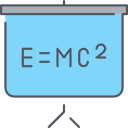
Text
KLASIFIKASI PENILAIAN PENGAJUAN KREDIT MENGGUNAKAN ALGORITMA BACKPROPAGATION YANG DIOPTIMASI DENGAN ALGORITMA GENETIKA
Penilaian
0,0
dari 5
One of the main functions of banks is to provide loan or credit to the public. In granting the credit, it is necessary to analyze the prospective borrower first. Things that need to be analyzed include personal data, credit amount, credit duration, credit purpose, etc. Large number of customers with various characteristics causes problems in conducting credit scoring such as how to do credit scoring modeling to apply systematic data analysis, explore patterns of behavior and credit characteristics, and then capture the relationship between historical information and future credit performance. Backpropagation is a algorithm which can recognize data patterns well. However, backpropagation has an unstable and quite bad convergent speed caused by a local minimum due to the random selection of initial weights. Therefore, a genetic algorithm is used to look for the best weights. This study aims to classify credit applications using backpropagation and backpropagation optimized by genetic algorithms and compare the performance of the two methods. The data is German credit dataset which consists of 1000 data. 800 data are used as training data to produce the model, while 200 data are used as testing data to test the model. Based on the test results, there is no significant increase in performance for optimized backpropagation. Optimized backpropagation with genetic algorithms produces the highest average accuracy of 79% with an average error value (MSE) of 0.1555 while unoptimized backpropagation produces the highest average accuracy is 78.5% with an average error value of 0.1556.
Availability
| Inventory Code | Barcode | Call Number | Location | Status |
|---|---|---|---|---|
| 2307000139 | T86154 | T861542022 | Central Library (Referens) | Available but not for loan - Not for Loan |
Detail Information
- Series Title
-
-
- Call Number
-
T861542022
- Publisher
- Inderalaya : Prodi Teknik Informatika, Fakultas Ilmu Komputer., 2022
- Collation
-
xvii, 126 hlm.; ilus.; 29 cm
- Language
-
Indonesia
- ISBN/ISSN
-
-
- Classification
-
005.360 7
- Content Type
-
-
- Media Type
-
-
- Carrier Type
-
-
- Edition
-
-
- Subject(s)
- Specific Detail Info
-
-
- Statement of Responsibility
-
SEPTA
Other version/related
| Title | Edition | Language |
|---|---|---|
| MEKANISME PENGAJUAN DAN PENILAIAN KREDIT DI PT. PERTAMINA PATRA NIAGA | id |
File Attachment
Comments
You must be logged in to post a comment
 Computer Science, Information & General Works
Computer Science, Information & General Works  Philosophy & Psychology
Philosophy & Psychology  Religion
Religion  Social Sciences
Social Sciences  Language
Language  Pure Science
Pure Science  Applied Sciences
Applied Sciences  Art & Recreation
Art & Recreation  Literature
Literature  History & Geography
History & Geography